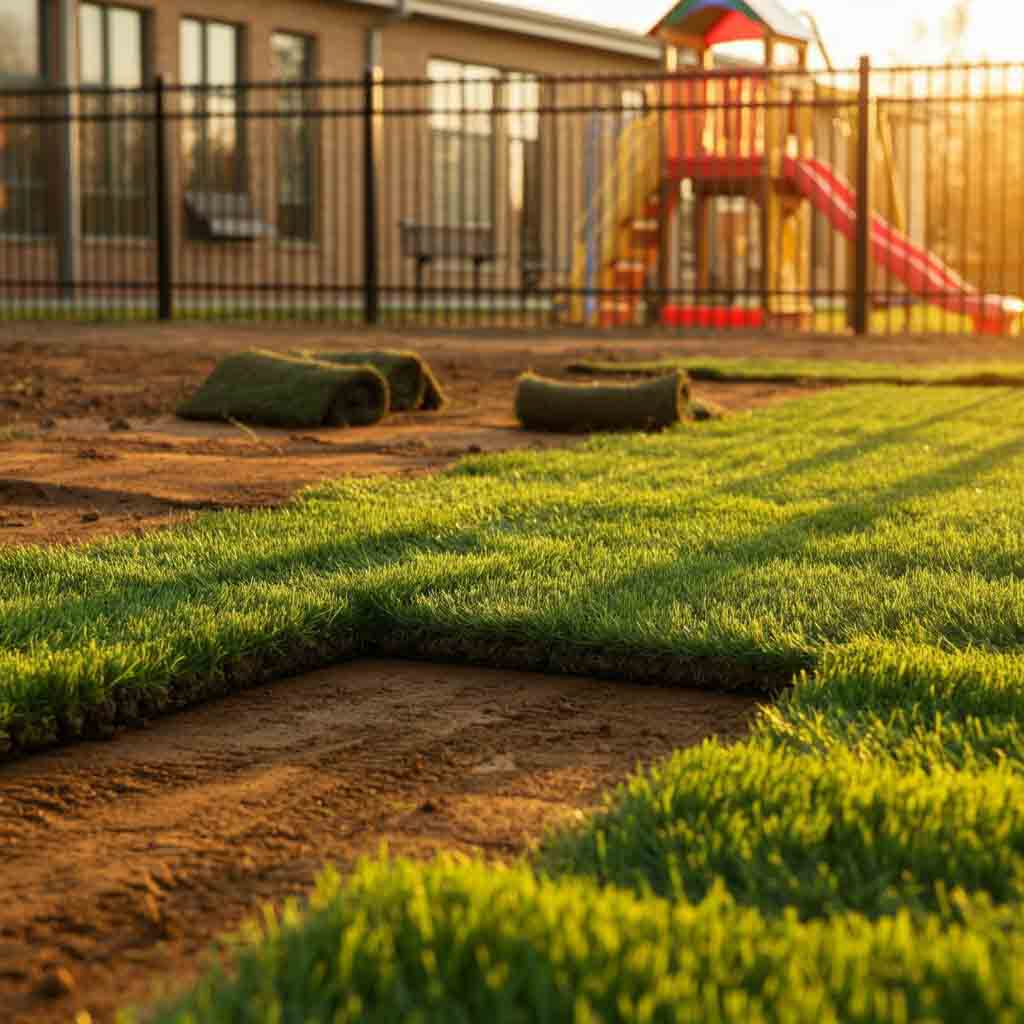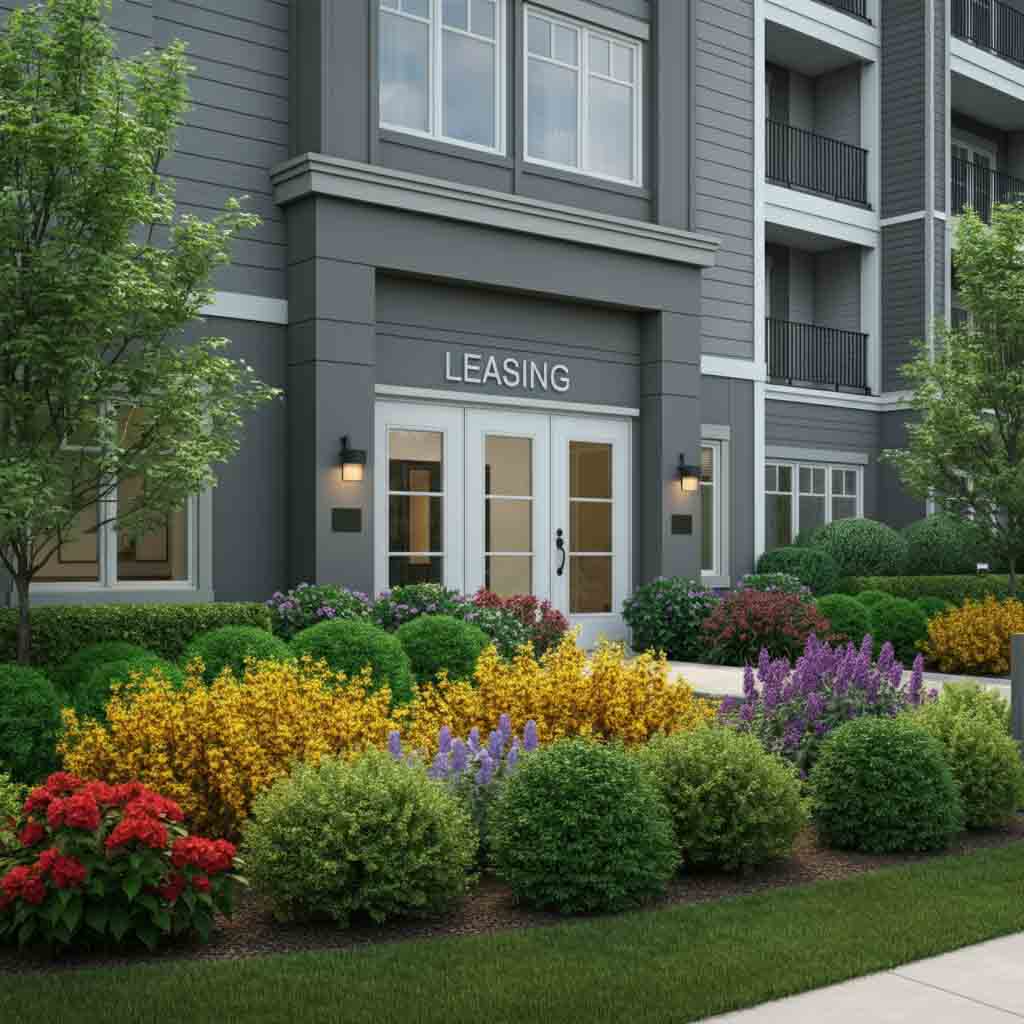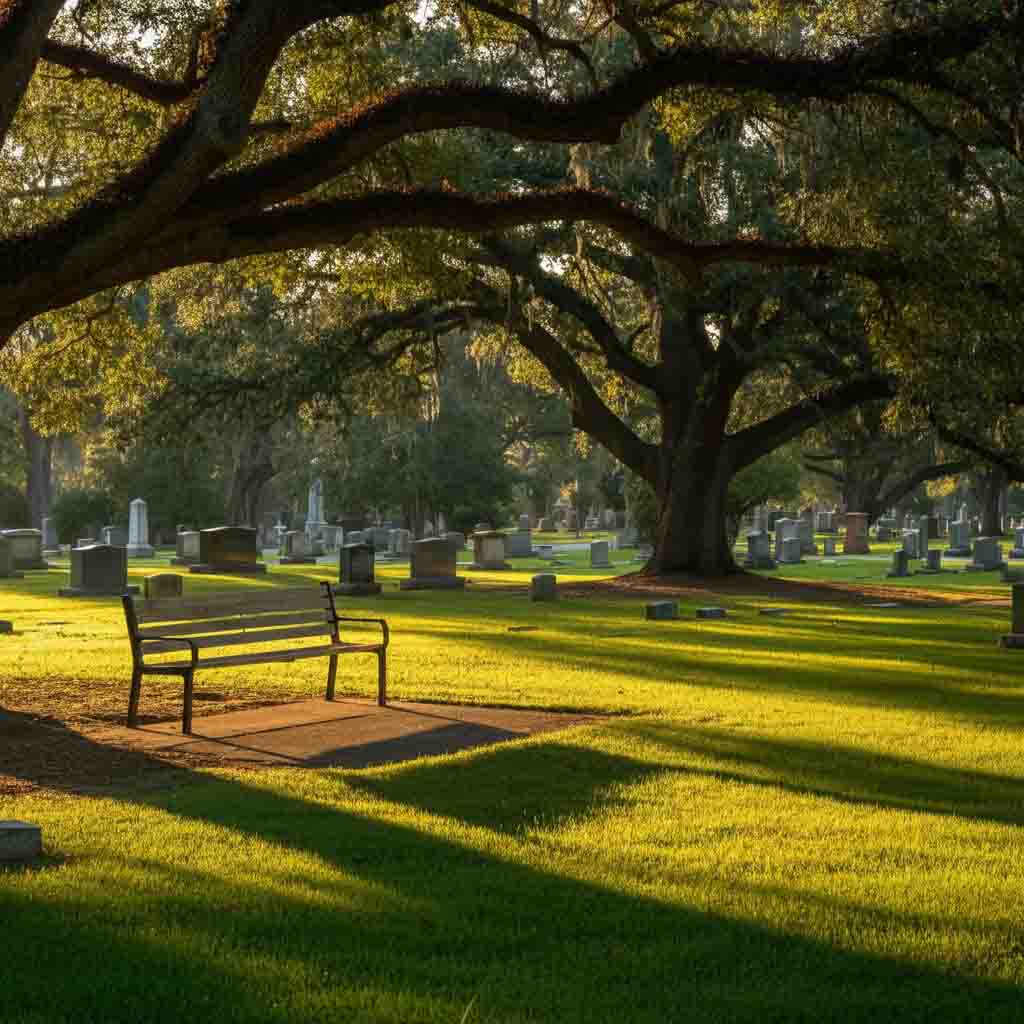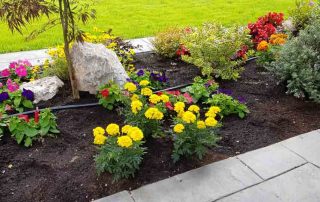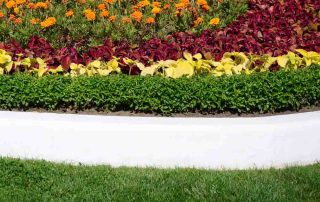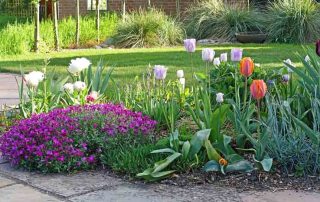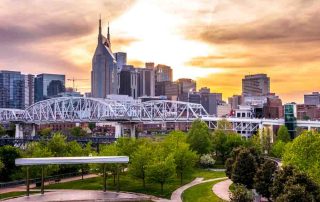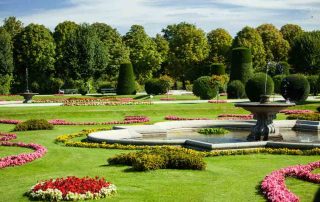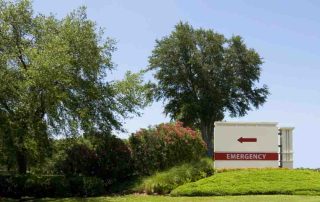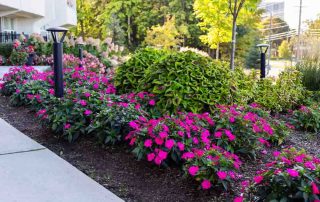 Pugh’s Earthworks Blog
Pugh’s Earthworks Blog
Pugh’s Earthworks was originally started by Mark Pugh. Our firm has been in business since 1992. Over the past 25 years, we have grown rapidly. In all that time and throughout all that growth, we have remained true to our motto, Big Company Strength, Small Company Values! Regardless of the size of the client we are working for, our staff will deliver the best possible service, while treating each client with the utmost of respect. In a word, “We Love Our Customers” and “We Appreciate The Opportunity to Serve.”
Some companies talk about providing quality service but that can be just lip service. Pugh’s Earthworks offers an excellent quality assurance program. We are licensed and insured and stand behind all of the work that we perform with our quality assurance guarantee.
QUALITY POLICY
It is the goal of Pugh’s Earthworks to provide our customers, both internal and external, with services, which meet or exceed their expectations. We recognize that one of the most important assets we possess, enabling us to achieve this goal, is our professional staff. We strongly encourage all of our people to take the pride of ownership in all the work they do. To this end we commit ourselves to strive in all we do for total customer satisfaction.
TOTAL CUSTOMER SATISFACTION
Management guarantees that ongoing support of these goals is our highest priority. We must never lose sight that customer satisfaction is a direct measure of our performance. Working together as a team, making use of all our talents and expertise, we will accomplish our objective.


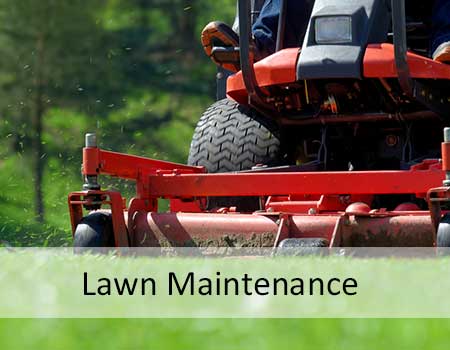


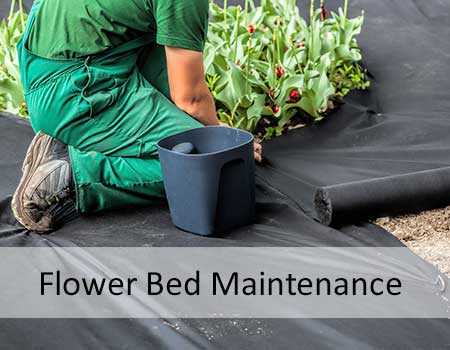

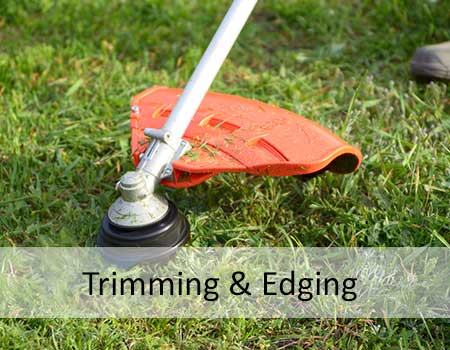
“We Love Our Customers” and Appreciate The Opportunity to Serve.”
VIEW MORE POSTS
Mid-South Cities like Benton Arkansas Benefit from Professional Landscaping Services
Pugh's Earthworks Pugh's Earthworks is available to offer Benton Arkansas Commercial Landscaping and services to many other cities in the Mid-South. With a focus on quality and reliability, their team ensures that businesses in Benton receive exceptional care for their outdoor spaces. From routine maintenance to intricate landscape designs, Pugh's Earthworks helps enhance the appearance and functionality of commercial properties, creating environments that leave lasting impressions. At Pugh's Earthworks, we understand the importance of creating a welcoming and aesthetically pleasing environment for your business. That is why we offer a range of services to meet the unique needs of businesses and residences in Benton, Arkansas. The first step to having a beautiful landscape is proper maintenance. Our team of skilled professionals offers routine lawn mowing, trimming, and edging services to keep your property looking pristine all year round. We also provide irrigation system installation and repairs to ensure that your plants are always well-watered and healthy. Benton, Arkansas, is a charming city located in Saline County, just 25 miles southwest of the state capital, Little Rock. With its combination of small-town warmth and easy access to urban amenities, it has become an appealing destination for families, professionals, and retirees alike. Founded in 1833, Benton boasts a rich history and a strong sense of community. The city is part of the Little Rock–North Little Rock–Conway Metropolitan Statistical Area and serves as the county seat of Saline County. Its population has steadily grown, reflecting its popularity as a great place to live and work. Things to Do in Benton Benton offers a mix of attractions that highlight its past, natural beauty, and local charm: Historic Downtown Benton: Take a stroll through the historic district, featuring unique shops, restaurants, and beautifully preserved architecture. Riverside Park: A favorite spot for locals, this park offers walking trails, picnic areas, and sports fields for outdoor activities. Saline River: Nature enthusiasts will appreciate opportunities for kayaking, fishing, and exploring this scenic river. Gann Museum of Saline County: Housed in a historic building made of bauxite, the museum showcases local history and culture. Local Events: Benton hosts various community events throughout the year, including parades, farmers’ markets, and festivals. Education and Business Benton is part of the Benton School District, known for its commitment to providing quality education. The city also fosters economic growth with a mix of local businesses and larger employers, contributing to a healthy job market. Proximity to Little Rock enhances career and educational opportunities. Why Residents Love Benton Community Atmosphere: Benton is known for its friendly, welcoming vibe and strong sense of neighborly connection. Affordable Living: Housing costs in Benton are generally lower than the national average, making it an attractive option for families and individuals seeking affordability. Convenient Location: Its close proximity to Little Rock allows residents to enjoy the best of both worlds - a quiet, small-town feel with quick access to city amenities. Whether you are looking for a new place to call home, a short getaway to experience Arkansas hospitality, [...]
Commercial Landscaping Services Need to be Tailored to Outdoor Shopping Centers
Pugh's Earthworks Pugh's Earthworks proudly provides top-tier commercial landscaping services tailored to outdoor shopping centers like Collierville Carriage Crossing. With offices strategically located in three states, we have established ourselves as a trusted and premier landscaping company. Our dedication to excellence and client satisfaction ensures that every space we manage thrives with beauty and functionality, leaving lasting impressions on visitors and customers alike. At Pugh's Earthworks, we offer a wide range of commercial landscaping services to meet the unique needs of outdoor shopping centers. From initial design and installation to ongoing maintenance and enhancements, our team of professionals is equipped with the knowledge, skills, and resources to transform any outdoor space into a thriving landscape. Design and Installation We understand that every outdoor shopping center has its own unique character and requirements. That is why we work closely with our clients to create custom landscape designs that not only enhance the overall aesthetic but also complement the surrounding architecture and environment. Our experienced designers use state-of-the-art technology to bring your vision to life while ensuring practicality, sustainability, and cost Collierville Carriage Crossing is an outdoor lifestyle shopping center located in Collierville, Tennessee. It offers a relaxed and inviting atmosphere for shopping, dining, and entertainment, making it a popular destination for locals and visitors alike. Key Features Shopping: Carriage Crossing hosts a variety of retail shops, including national brands, specialty boutiques, and local stores. Whether you are looking for fashion, beauty, home décor, or accessories, you’ll find something to suit your needs. Dining: The shopping center boasts a diverse range of dining options. From casual cafes to sit-down restaurants, you can enjoy anything from quick bites to a leisurely meal. Atmosphere: The center is designed as an open-air mall with beautiful landscaping, walkable pathways, and inviting seating areas, making it perfect for a stroll or a family outing. Events: Carriage Crossing frequently organizes community events, including seasonal celebrations, live music, and family-friendly entertainment, adding to the overall experience. Entertainment Amenities: The center also features a movie theater and play areas for children, ensuring there’s something for everyone to enjoy. Collierville Carriage Crossing is more than a shopping destination; it is a place to connect with friends, explore unique stores, enjoy delicious meals, and unwind in a pleasant outdoor setting. Whether you’re running errands, grabbing lunch, or spending quality time with loved ones, it offers a welcoming and memorable experience. For more details about store directories, hours, and ongoing events, you can visit their official website or follow their social media channels to stay updated. Additionally, you can also subscribe to their newsletter for exclusive discounts and promotions. With over 70 stores to choose from, Collierville Carriage Crossing has something for everyone. From popular retailers like H&M and American Eagle, to specialty shops like Bath & Body Works and Francesca's, there is a variety of options for fashion, beauty, home goods, and more. After working up an appetite from shopping or exploring the various attractions, there is a wide selection of dining [...]
Professional Landscaping for Banks Reflects a Polished and Welcoming Image
Pugh's Earthworks Pugh's Earthworks is the Mid-South's premiere commercial landscaping company, delivering exceptional service tailored to meet the needs of various industries. Among our specialties is professional bank landscaping, where we provide reliable and aesthetically pleasing solutions for local banks, including trusted institutions like Bank 3 Commercial Landscaping. By combining innovative designs with meticulous maintenance, we ensure that each property reflects a polished and welcoming image. Our expertise in creating sustainable and visually appealing landscapes has made us a preferred partner for businesses across the region. At Pugh's Earthworks, we understand that the landscaping needs of commercial properties, such as banks, can be vastly different from those of residential properties. That's why we have a team of highly trained professionals who are well-versed in the specific requirements and challenges faced by businesses. We take pride in delivering exceptional service to our clients, and this is especially evident in our work with local banks for example Bank 3 Commercial Landscaping. Our attention to detail and commitment to quality has earned us a reputation for being one of the top choices for bank landscaping services in the Mid-South region. In addition to creating visually appealing landscapes, we also prioritize sustainability in all our projects. We use eco-friendly materials and techniques to ensure that our landscapes not only look beautiful but also have a positive impact on the environment. Our team at Pugh's Earthworks is constantly staying up to date with the latest trends and technologies in commercial landscaping, allowing us to provide innovative solutions for Bank 3 Commercial Landscaping and all our clients. We work closely with each bank to understand their unique vision and needs, and then use our expertise to bring that vision to life. Moreover, we understand the importance of maintaining a professional image for banks. That is why our maintenance services are tailored to keep your property looking pristine and inviting year-round. From lawn care and seasonal plantings to irrigation and pest control, we handle all aspects of keeping your landscape in top shape. Bank 3 is a financial institution located in Memphis, Tennessee. Known for its community-focused approach, Bank 3 aims to provide valuable banking solutions for both individuals and businesses. While specific details about its services may vary, most community banks like Bank 3 offer products such as: Personal Banking: Checking and savings accounts, personal loans, and CDs (Certificates of Deposit) to help customers manage their finances effectively. Business Banking: Services tailored to small and medium-sized businesses, including business loans, cash management tools, and commercial accounts. Customer-Focused Approach: Local banks often pride themselves on providing personalized financial advice and fostering long-term relationships with their clients. To learn more about Bank 3 in Memphis, TN—including their locations, hours of operation, or specific services offered—I recommend visiting their official website or contacting them directly for the most accurate and up-to-date information. Additionally, you can also follow them on social media platforms such as Facebook, Twitter, and Instagram to stay updated on any special promotions or community events they [...]
Small Commercial Landscaping Upgrades Can Make a Big Difference on a Property
Pugh's Earthworks Pugh's Earthworks takes pride in offering exceptional commercial landscaping services tailored to meet the unique needs of various industries and communities. One of our specialties includes apartment landscaping, where we ensure that residential complexes always look their best. Serving the Little Rock area, we are equipped to handle landscaping needs for complexes like the Palisades at Chenal Valley and many others. Our team is committed to enhancing the aesthetic and functional value of any property, creating welcoming and well-maintained outdoor spaces for residents and guests alike. Let us delve deeper into the importance of maintaining well-landscaped apartment complexes and how Pugh's Earthworks can help achieve this goal. Benefits of Landscaping for Apartment Complexes A beautiful and well-maintained landscape not only adds curb appeal to an apartment complex but also offers numerous benefits. Here are some reasons why investing in professional landscaping services like Pugh's Earthworks is crucial for apartment complexes: Attracts Potential Residents: A visually appealing landscape creates a positive first impression on potential residents, making them more likely to choose your complex over others. Increases Property Value: Well-manicured lawns, gardens, and outdoor spaces add value to the property, leading to higher rental and resale prices. Promotes a Healthy Environment: Landscaping not only beautifies the surroundings but also helps in reducing air, water, and noise pollution. Green spaces also promote mental and physical well-being for residents. Encourages Community Interaction: Functional outdoor spaces like communal gardens, walking paths, and patios create opportunities for residents to interact, fostering a sense of community within the complex. Improves Safety and Security: Properly maintained landscapes with adequate lighting can deter crime and provide a safe environment for residents. Why Choose Pugh's Earthworks for Apartment Landscaping When it comes to apartment landscaping, Pugh's Earthworks is the trusted choice of many complex owners and property managers. Our team of experienced professionals understands the unique challenges and requirements of maintaining residential complexes and works closely with clients to ensure that their vision is brought to life. Here are some reasons why you should choose us for your apartment landscaping needs: Customized Solutions: We offer tailored solutions to meet the specific needs and budget constraints of each client, ensuring maximum satisfaction. Comprehensive Services: From lawn maintenance, tree care, irrigation systems, to hardscaping and more - we provide a wide range of services to keep your landscape in top condition. Attention to Details: We pay attention to even the smallest details to create a polished and well-maintained landscape that exceeds expectations. Reliable and Timely: Our team is professional, punctual, and dedicated to providing timely services to keep your property looking its best all year round. Sustainable Practices: We are committed to using eco-friendly practices and techniques that promote sustainability and reduce environmental impact. In conclusion, having a well-landscaped apartment complex not only enhances its visual appeal but also offers numerous benefits for residents and property owners. With Pugh's Earthworks as your trusted partner, you can rest assured that your complex will always look its best. Contact us today [...]
Professional Commercial Landscaping is Tailored to the Unique Needs of Medical Clinics
Pugh's Earthworks Pugh's Earthworks specializes in providing professional commercial landscaping services tailored to the unique needs of medical clinics. Their expertise ensures that facilities such as Le Bonheur Pediatric Associates benefit from well-maintained, aesthetically pleasing outdoor spaces that promote tranquility and positivity for patients, staff, and visitors alike. The Importance of Landscaping for Medical Clinics Landscaping is an essential aspect of any medical clinic, both from a practical and aesthetic perspective. It not only enhances the overall appearance of the facility but also plays a crucial role in creating a comfortable and healing environment for patients. Promoting Healing and Well-being The outdoor spaces of a medical clinic are often the first point of contact for patients, and it is important to make a positive impression. A well-maintained landscape with greenery, flowers, and a variety of plants can help create a calming atmosphere that promotes healing and well-being. Studies have shown that exposure to nature has numerous benefits, including reducing stress levels, promoting relaxation, and improving overall mood. This is especially important for patients who may be experiencing high levels of anxiety or discomfort due to their medical condition. Creating a Positive Image The appearance of a medical clinic's outdoor spaces can also greatly impact the overall image and reputation of the facility. A well-designed and maintained landscape can convey a sense of professionalism, care, and attention to detail, which can help build trust and confidence in patients. It can also serve as a reflection of the quality of care provided within the facility. Le Bonheur Children’s Hospital Pediatric Associates is typically affiliated with Le Bonheur Children's Hospital, a leading children's hospital known for providing specialized and comprehensive healthcare to children. Pediatric Associates, as the name suggests, likely refers to a network or group of pediatric professionals within the hospital or connected to its healthcare system. These professionals focus on offering primary and specialized care for infants, children, and adolescents. Le Bonheur Children’s Hospital is renowned for its commitment to pediatric healthcare through advanced medical technology, experienced pediatricians, and child-centered care. It commonly provides services such as routine checkups, vaccinations, treatment for illnesses, and care for chronic conditions. Additionally, the hospital supports families by offering educational resources, support programs, and expert consultations to ensure the overall well-being of children. For specific details about "Le Bonheur Children's Hospital Pediatric Associates," it may be necessary to consult their official website or contact them directly for accurate and comprehensive information. Fortunately, pediatricians and physicians at Le Bonheur Children’s Hospital Pediatric Associates are known for their exceptional communication skills and accessibility. They prioritize building strong relationships with families to better understand the needs of each child. Moreover, as part of a leading healthcare system, Le Bonheur Children's Hospital Pediatric Associates likely has access to cutting-edge medical research and treatment options. This allows them to offer the best possible care for children with complex conditions or special needs. Their expertise in various areas of pediatric medicine ensures that children receive individualized, evidence-based treatment plans tailored to [...]
Commercial Landscaping is a Vital Component to Attractive Apartment Complexes
Pugh's Earthworks Since 1989, Pugh's Earthworks has been the premier Mid-South Commercial Landscaping Company. We pride ourselves on delivering top-tier landscaping services to a variety of communities, including The Retreat in Germantown. Our commitment to excellence and client satisfaction has established a long-standing reputation for maintaining beautiful and sustainable outdoor spaces. We offer a wide range of services including landscape design, installation, maintenance, and irrigation. Our team of experienced professionals utilizes the latest techniques and equipment to ensure that your outdoor space is not only aesthetically pleasing but also functional and sustainable. We understand that each client's needs are unique, which is why we work closely with our clients to create custom solutions for their specific landscaping needs. At Pugh's Earthworks, we believe in the importance of environmental stewardship. That is why we prioritize using eco-friendly practices in our landscaping services. From choosing native plants to implementing water-saving irrigation systems, we strive to minimize our impact on the environment while still creating beautiful landscapes. In addition to our commitment to the environment, we also prioritize the safety and satisfaction of our clients. Our team is fully licensed, insured, and trained to handle any landscaping project with precision and care. We also offer ongoing maintenance services to ensure that your outdoor space continues to thrive throughout every season. Beyond our professional services, Pugh's Earthworks is dedicated to giving back to the community through various charitable initiatives. We believe in investing in our local communities and strive to make a positive impact through volunteer work and donations. In conclusion, at Pugh's Earthworks, we are more than just a commercial landscaping company. We are committed to providing exceptional services while also preserving the environment and giving back to our communities. Contact us today to see how we can transform your outdoor space into a beautiful and sustainable landscape that you can be proud of for years to come. Let us show you why we are the top choice for landscaping in The Retreat in Germantown and beyond. Our passion for excellence drives us to constantly evolve and improve our services, making us the go-to destination for all your commercial landscaping needs. The Retreat in Germantown, MS, is a residential community designed for individuals and families seeking a blend of comfort, convenience, and modern living. Located in the charming Germantown area of Mississippi, The Retreat offers a balance of serene suburban life with easy access to nearby amenities and urban attractions. Key Features of The Retreat: Modern Residences: The community features a range of well-designed homes or apartments (specific details would depend on the exact offerings of The Retreat), blending contemporary architecture with functional layouts. Community Amenities: Many residential retreats like this provide amenities for residents such as communal spaces, fitness centers, swimming pools, or walking trails. These details enhance the lifestyle offerings at The Retreat. Prime Location: Germantown is often praised for its excellent school systems, parks, and a close-knit community feel. The Retreat likely benefits from these local features, providing a family-friendly [...]
Commercial Landscape Services Keep Nashville Scenic
Pugh's Earthworks Pugh's Earthworks is proud to offer top-tier Nashville Commercial Landscape Service. As the premier landscaping provider in the mid-state region, we specialize in creating and maintaining visually appealing, functional, and sustainable outdoor environments for businesses. Our team of experienced professionals is dedicated to delivering high-quality results tailored to meet the unique needs of each client. With a focus on reliability and attention to detail, we ensure that your commercial landscape leaves a lasting positive impression. From large corporate campuses to small business properties, we have the knowledge and resources to handle all your landscaping needs. Our services include landscape design and installation, lawn care and maintenance, irrigation systems, hardscaping, and more. We also offer seasonal services such as snow removal and holiday decorations for a complete year-round landscaping solution. At Pugh's Earthworks, we understand the importance of first impressions in the business world. That is why we work closely with our clients to create a landscape that not only enhances the aesthetic appeal of their property but also aligns with their brand image and values. Our team strives to exceed expectations by consistently providing exceptional service and results. We take pride in our commitment to sustainability and environmentally friendly practices. From using native plants to implementing water-saving techniques, we are dedicated to creating landscapes that not only look great but also have a positive impact on the environment. Our reliable and professional team at Pugh's Earthworks is ready to transform your commercial landscape into a beautiful and functional space. Contact us today for a consultation and see why we are the preferred choice for Nashville Commercial Landscape Service. Let us help you make a lasting impression with your outdoor space. So do not hesitate, reach out to us now! We cannot wait to work with you. In addition to our exceptional services, Pugh's Earthworks also offers convenient maintenance packages tailored specifically for each client's needs. We understand that every business has different requirements and budgets, which is why we offer customizable maintenance plans to fit your unique situation. Our team works efficiently to keep your landscape looking its best year-round while also helping you save time and money. But do not just take our word for it - our satisfied clients speak for themselves. Pugh's Earthworks has a proven track record of delivering top-notch commercial landscaping services in the Nashville area. From small businesses to large corporations, we have a diverse portfolio showcasing our expertise in creating and maintaining beautiful landscapes. Welcome to Nashville, Tennessee—a city where the notes of tradition and innovation harmonize in perfect rhythm. Known as the heart of Music City, Nashville offers more than just melodies; it delivers a curated experience that is equal parts Southern warmth and contemporary allure. The Rhythm of Music City Much like a beautifully orchestrated floral arrangement, Nashville strikes a balance between its deep-rooted heritage and modern vibrancy. It is a city where the Grand Ole Opry echoes with the sounds of history, while intimate venues like The Bluebird [...]
Essential Cemetery Commercial Landscaping Services
Pugh's Earthworks Pugh's Earthworks is proud to deliver professional Cemetery Commercial Landscaping Services to a wide range of clients, including esteemed cemeteries such as Memphis Funeral Home & Memorial Gardens. With a commitment to excellence, our team ensures that these sacred spaces are maintained with the utmost care, creating a serene and inviting environment for visitors. Our team at Pugh's Earthworks understands the sensitive nature of cemetery landscaping and the importance of maintaining a peaceful atmosphere for visitors. We work closely with our clients to understand their specific needs and create customized landscaping solutions that reflect the dignity and respect these sites deserve. In addition to regular maintenance tasks such as mowing, pruning, and fertilizing, we also offer specialized Cemetery Commercial Landscaping Services. Our team is trained in handling delicate headstones and monuments with care while still effectively managing the surrounding landscape. We also provide seasonal plantings, ensuring that the cemetery looks beautiful year-round. At Pugh's Earthworks, we pride ourselves on our attention to detail and dedication to quality. We use top-of-the-line equipment and techniques to ensure that every inch of the cemetery is well-maintained and visually appealing. Our team is also committed to sustainability, utilizing eco-friendly practices wherever possible. We understand that cemeteries hold a special place for many families and loved ones, which is why we approach our Cemetery Commercial Landscaping Services with compassion and professionalism. Our goal is to honor the memory of those who have passed through providing beautiful and well-maintained landscapes for their final resting place. We are honored to serve clients like Memphis Funeral Home & Memorial Gardens and remain dedicated to ensuring their grounds are always a peaceful and respectful space for visitors. At Memphis Funeral Home & Memorial Gardens, we believe that every life deserves to be beautifully honored. Nestled in the heart of Memphis, our serene and meticulously maintained grounds provide a tranquil space for families to gather, reflect, and celebrate the memories of their loved ones. A Place of Comfort and Reflection Memphis Funeral Home & Memorial Gardens offers not just a resting place but a sanctuary where comfort meets tradition. Surrounded by lush greenery and thoughtfully designed gardens, every element of our space is crafted to provide peace and solace during a time of loss. Services Tailored to Your Needs We understand that every family’s needs are different, which is why we offer a range of personalized services to commemorate your loved one in a meaningful way. From elegant memorial ceremonies to intimate graveside services, we provide end-to-end support and guidance, ensuring attention to every detail. Why Families Choose Us Memorable Memorials: With state-of-the-art facilities and resources, we curate experiences that honor individuality and legacy. Experienced Professionals: Our compassionate staff members are dedicated to guiding families through each step with care and understanding. A Commitment to Care: With a longstanding history of serving the Memphis community, we strive to uphold our legacy of trust and reliability. A Timeless Setting Beyond our memorial services, the beauty of Memorial Gardens stands [...]
Professional Hospital Commercial Landscaping Makes for Great Curb Appeal
Pugh's Earthworks Pugh's Earthworks prides itself on providing comprehensive Hospital Commercial Landscaping tailored specifically per facility ensuring attractive and functional outdoor spaces. Our team understands the unique landscaping requirements of medical facilities, such as creating tranquil environments for patients and visitors and maintaining well-kept grounds that reflect the professionalism of the institution. From meticulous lawn care and effective irrigation systems to expertly designed hardscapes and vibrant flower beds, we cover every aspect of landscaping to meet the high standards required by hospitals like Methodist South Hospital and many others. With Pugh's Earthworks, you can trust that your hospital's outdoor spaces will always be inviting, safe, and impeccably maintained. We understand that hospitals require a balance between aesthetics and functionality when it comes to their outdoor spaces. That is why our team carefully considers the needs of both patients and staff when designing and maintaining landscapes. We strive to create peaceful areas for patients to relax and heal, while also providing practical solutions for hospital operations, such as proper drainage systems and efficient pathways for emergency vehicles. Our experienced team is trained in the latest landscaping techniques and uses state-of-the-art equipment to ensure that all tasks are completed efficiently and with minimal disruption to hospital operations. We are also committed to using environmentally friendly practices, such as incorporating native plants into our designs and implementing sustainable irrigation methods. Methodist Hospital South Methodist Hospital South is a beacon of compassionate care and advanced medical excellence, serving the community with dignity and dedication. Located in a serene setting, this hospital combines state-of-the-art technology with a deeply rooted commitment to patient-centered care. The welcoming environment speaks to its mission of providing hope and healing in times of need. Services and Specialties Methodist Hospital South offers a comprehensive range of medical services designed to meet diverse health needs. From emergency care facilities that ensure prompt attention to specialized departments focusing on cardiology, orthopedics, women's health, and more, the hospital strives for excellence in every field. Their team of expert physicians and staff work collaboratively to deliver personalized treatment plans, ensuring every patient receives care tailored to their unique situation. A Legacy of Compassion What truly sets Methodist Hospital South apart is its deep sense of community and compassion. With programs aimed at wellness education, preventive healthcare, and patient support, the hospital plays an integral role in fostering a healthier and more connected community. Designed for Comfort and Healing Every detail of Methodist Hospital South has been thoughtfully designed to support recovery and wellbeing. From private, calm patient rooms to advanced surgical suites, the hospital merges comfort with cutting-edge care to create an atmosphere of assurance and trust. If you or your loved ones seek medical care where innovation meets empathy, Methodist Hospital South offers a haven of healing and excellence, dedicated to serving your health needs with unwavering commitment. For more information or to schedule a visit, we invite you to connect with their expert care team. Let Methodist Hospital South support you on your [...]
Office Professional Commercial Landscaping is a Beneficial Service
Pugh's Earthworks At Pugh’s Earthworks, we take pride in our long-standing history of delivering Office Professional Commercial Landscaping services tailored to meet the unique needs of office complexes. Our commitment to excellence was exemplified in our work with clients such as the former Alltel Corporation, where we provided meticulous and reliable landscaping solutions. Do not just take our word for it—our website features a collection of testimonials from satisfied clients, showcasing the trust and satisfaction we have earned through years of dedicated service. Visit our site to see how we can bring the same level of care and professionalism to your commercial property. In addition to our exceptional reputation and track record, we also offer a range of services that can meet the diverse needs of office complexes. From routine maintenance to landscape design and installation, our team has the expertise and experience to transform your property into a welcoming and inviting space for employees and visitors alike. We understand that maintaining a commercial property can be challenging, especially with the constant demands of running a business. That is why we strive to make the process as seamless as possible, providing reliable scheduling and communication to ensure minimal disruption to your daily operations. Alltel Corporation, headquartered in Little Rock, Arkansas, was a pioneering telecommunications company that played a significant role in shaping the wireless communications industry. Established in 1943, Alltel initially focused on providing wireline telephone services, eventually growing into one of the largest providers of wireless and broadband communications in the United States. Operating with a commitment to innovation, Alltel became renowned for offering cutting-edge wireless services across rural and underserved areas, making communication accessible for millions. Its dedication to customer-focused solutions was reflected through seamless coverage, family-friendly plans, and groundbreaking services during a period of rapid technological advancement. Alltel’s contributions did not stop at connectivity—it fostered strong ties within the communities it served. By focusing on small and midsized markets, the company ensured access to advanced telecommunications technology where it was needed most. Beyond delivering service, Alltel was instrumental in creating jobs and supporting local economies. The company’s operations eventually culminated in an acquisition by Verizon Wireless in 2009, a move that integrated Alltel’s robust regional network with Verizon’s national presence. Though Alltel no longer operates as an independent entity, its legacy endures in the foundational impact it had on the telecommunications landscape, especially in its commitment to connecting rural America with modern technology. As a telecommunications pioneer, Alltel Corporation set the standard for providing reliable and innovative wireless services. Its dedication to connecting rural and underserved communities not only enabled millions to communicate but also helped pave the way for future advancements in the industry. Through its focus on customer-centric solutions, Alltel established itself as a trusted and reliable provider. In addition to offering seamless coverage and family-friendly plans, the company also spearheaded groundbreaking services during an era of rapid technological growth. But Alltel's impact reached beyond just connectivity. By focusing on small and midsized markets, the [...]

